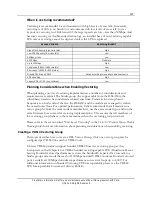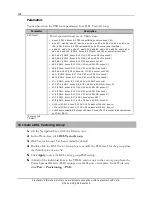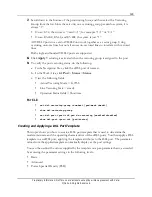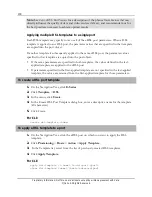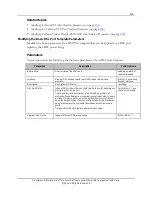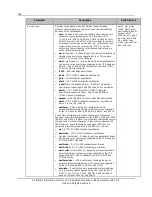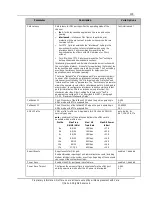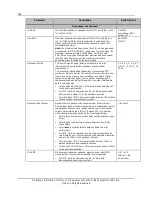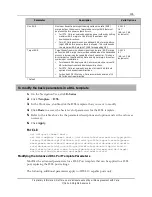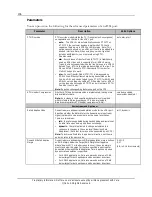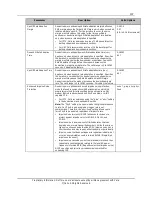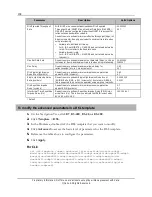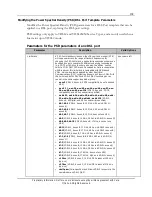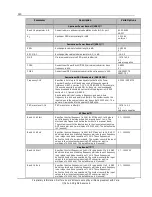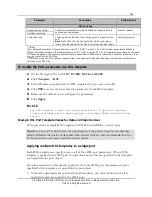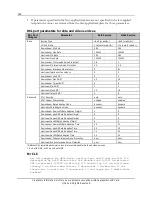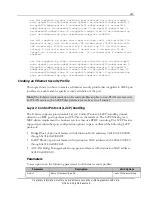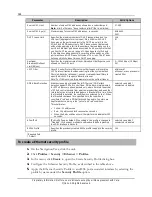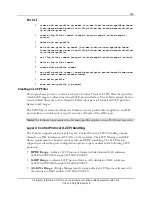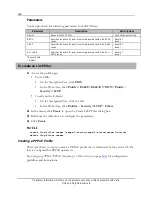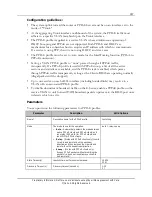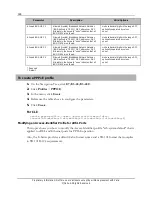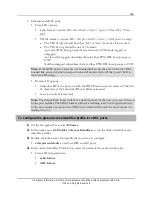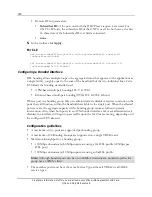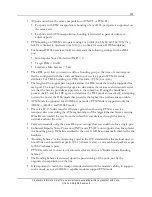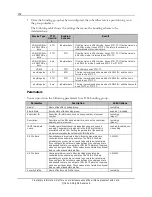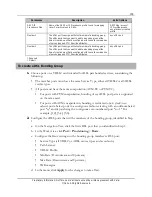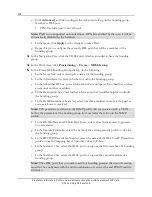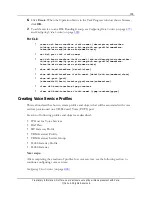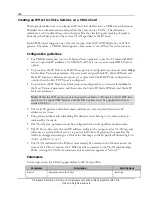
141
Proprietary Information: Not for use or disclosure except by written agreement with Calix.
© Calix. All Rights Reserved.
Parameter
Description
Valid Options
DSL Vectoring
Downstream Vectoring
Calix recommends that vectoring be enabled or disabled for both
upstream and downstream.
enable ‡, disable
Upstream Vectoring
Vectoring Group
Vectoring is activated when the vectoring group is assigned to the
port.
Note:
When xDSL lines that are not part of a DSL vector group
retrain, lines that are part of the DSL vector group may also retrain.
Vectoring group ID.
‡Default
**
For a detailed description of these parameters, see ITU-T G.997.1, section 7.3.1.2.14 Upstream power back-off shaped.
***
For a detailed description of these parameters, see ITU-T G.997.1, section 7.3.1.2.13 Downstream power back-off – Shaped.
****
These are bands in the frequency spectrum that are transmitted at -80dBm/Hz to reduce radio frequency interference that
may be caused by the VDSL2 line.
*******
These are bands in the frequency spectrum that carry no power to eliminate radio frequency interference that may be
caused by the VDSL2 line.
To modify the PSD parameters in a DSL template
1.
On the Navigation Tree, click
E7
,
E3-48C
,
E5-48
,
or E5-48C
.
2.
Click
Template
>
DSL
.
3.
In the Workarea, double-click the DSL template that you want to modify.
4.
Click
PSD
to access the basic level of parameters for the DSL template.
5.
Reference the table above to configure the parameters.
6.
Click
Apply
.
For CLI:
set dsl-template <name> psd [mask|upbo-band-*-*|upbo-k10|dpbo-bp-
*|dpbo-esel|dpbo-escm-*|dpbo-mus|dpbo-fmin|dpbo-fmax|rfi-band-*|gap-
band-*]
Example DSL Port Template Values for Data and Video Services
This topic shows example DSL templates for VDSL2 and ADSL2+ service types.
Note:
See
Calix xDSL Best Practices
for a description of the physical layer factors that may
directly influence the quality of data and video services delivery, and recommendations for
the best practices necessary to achieve optimal results.
Applying multiple DSL templates to a single port
Each DSL template may specify some or all of the xDSL port parameters. When a DSL
template is applied to an xDSL port, the parameter values that are specified in that template
are copied into the port object.
If another template is subsequently applied to the same xDSL port, the parameter values
specified in that template are copied into the port object.
If the same parameters are specified in both templates, the values defined in the last-
applied template are applied to the xDSL port.

